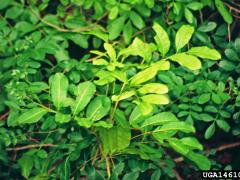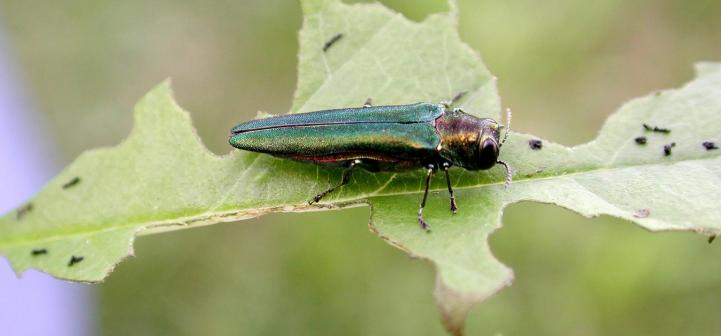Invasive Species: Cupaniopsis anacardioides, Carrotwood
Carrotwood is an invasive evergreen tree that can grow to a height of 35 ft. (10.7 m). The inner bark is orange; hence the common name. The leaves are compound with 4 to 10 leaflets; each leaflet is 4 to 8 in. (10 to 20 cm) long and shiny with rounded or emarginate (indented) apices. Flowering occurs in the winter when small, greenish white, five-petaled flowers appear in clusters in the leaf axils. Bright orange capsules with shiny black seeds ripen from June to May. Carrotwood is native to Australia and was introduced into the United States as early as 1955. This tree can grow in full sun or shade and has been shown to be salt tolerant. It occurs in marshlands, cypress swamps, pinewoods, and dunes.
What are invasive species and why should we be concerned about them?
Taxonomy: Scientific and Common Names for This Species
Sapindales > Sapindaceae > Cupaniopsis anacardioides (A. Rich.) Radlk.
Synonym(s): carrotweed
Cupaniopsis anacardioides – USDA PLANTS Profile
Distribution Maps
Carrotwood – The reported distribution of this invasive species across the United States. (Source: Invasive Plant Atlas of the United States)
Up-to-the-minute distribution maps and why they are important
Reporting This Invasive Species
What is the best way and place to report the occurrence of an invasive species?
How to report an invasive species sighting to EDDMapS – Early Detection & Distribution Mapping System
EDDMapS – Report an invasive species to EDDMapS
Cooperative Extension Offices – Find your local Cooperative Extension office on this map provided by USDA
How to Identify
This invasive species can be identified by looking for the characteristics described in the paragraphs that follow.
Tree
Carrotwood is an invasive evergreen tree that can grow to a height of 35 ft. (10.7 m). The inner bark is orange; hence the common name.
 |
|
| Forest & Kim Starr, Starr Environmental, bugwood.org | Chris Lockhart, Florida Natural Areas Inventory, bugwood.org |
Foliage
The leaves are compound with 4 to 10 leaflets; each leaflet is 4 to 8 in. (10-20 cm) long and shiny with rounded or emarginate (indented) apices.
 |
 |
| Amy Ferriter, State of Idaho, bugwood.org | Forest & Kim Starr, Starr Environmental, bugwood.org |
Flower
Flowering occurs in the winter when small, greenish white, five-petaled flowers appear in clusters in the leaf axils.
| bugwood.org | bugwood.org |
Fruit
Bright orange capsules with shiny, black seeds ripen from June to May.
 |
 |
| Chris Lockhart, Florida Natural Areas Inventory, bugwood.org | Ann Murray, University of Florida, bugwood.org |
Native Species That Resemble Carrotwood
– Images at invasive.org
| bugwood.org | bugwood.org |
– Images at invasive.org
| bugwood.org | bugwood.org |
Additional Images for Carrotwood
Carrotwood – Images at Invasive.org
Learning Resources for Carrotwood
Images, Video, and Information – University of Florida Center for Aquatic and Invasive Plants
Additional Information, Biology, Control and Management Resources
Control and management recommendations vary according to individual circumstances. Location, habitat, weather, and a variety of other conditions are factors that help determine the best treatment choice. To find the safest and most effective treatment for your situation, consult your state’s land-grant institution. If you will use chemicals as part of the control process, always refer to the product label.
United States Land-Grant University System – Find your land-grant university’s College of Agriculture, Cooperative Extension Service, or other related partner on this map provided by USDA.
Weeds Gone Wild: Alien Plant Invaders of Natural Areas – Plant Conservation Alliance
Invasive.org – Center for Invasive Species and Ecosystem Health
Electronic Data Information Source – IFAS Extension, University of Florida
Cupaniopsis anacardioides – Indian River Lagoon Species Inventory
Weed of the Month – Florida Department of Agriculture and Consumer Services

